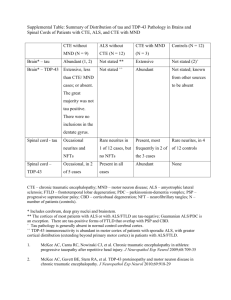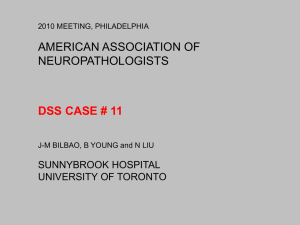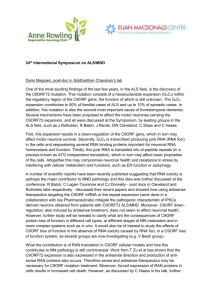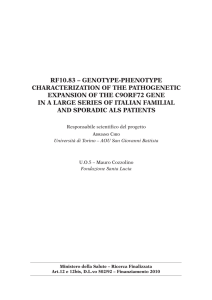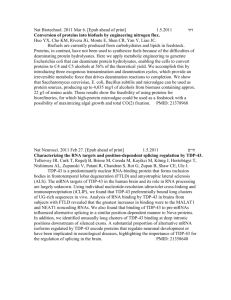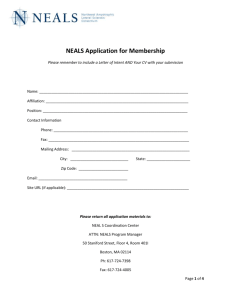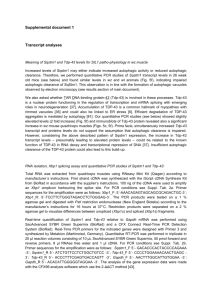Prof. Boris Rogelj Dept. of Biotechnology, Jožef Stefan Institute
advertisement
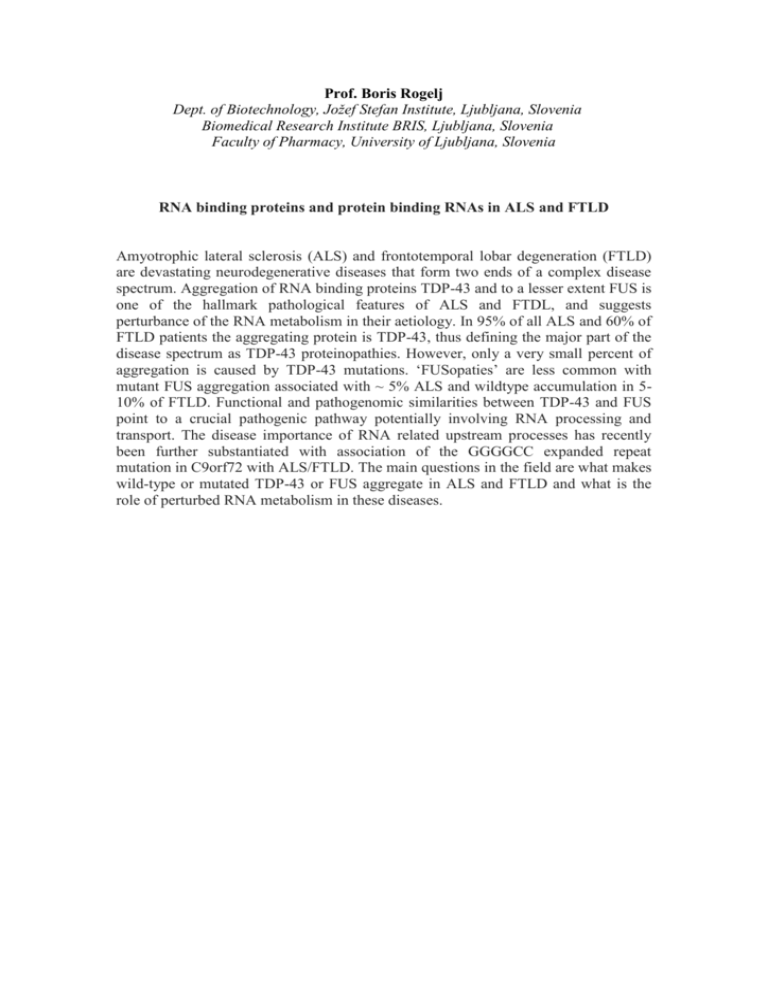
Prof. Boris Rogelj Dept. of Biotechnology, Jožef Stefan Institute, Ljubljana, Slovenia Biomedical Research Institute BRIS, Ljubljana, Slovenia Faculty of Pharmacy, University of Ljubljana, Slovenia RNA binding proteins and protein binding RNAs in ALS and FTLD Amyotrophic lateral sclerosis (ALS) and frontotemporal lobar degeneration (FTLD) are devastating neurodegenerative diseases that form two ends of a complex disease spectrum. Aggregation of RNA binding proteins TDP-43 and to a lesser extent FUS is one of the hallmark pathological features of ALS and FTDL, and suggests perturbance of the RNA metabolism in their aetiology. In 95% of all ALS and 60% of FTLD patients the aggregating protein is TDP-43, thus defining the major part of the disease spectrum as TDP-43 proteinopathies. However, only a very small percent of aggregation is caused by TDP-43 mutations. ‘FUSopaties’ are less common with mutant FUS aggregation associated with ~ 5% ALS and wildtype accumulation in 510% of FTLD. Functional and pathogenomic similarities between TDP-43 and FUS point to a crucial pathogenic pathway potentially involving RNA processing and transport. The disease importance of RNA related upstream processes has recently been further substantiated with association of the GGGGCC expanded repeat mutation in C9orf72 with ALS/FTLD. The main questions in the field are what makes wild-type or mutated TDP-43 or FUS aggregate in ALS and FTLD and what is the role of perturbed RNA metabolism in these diseases.
